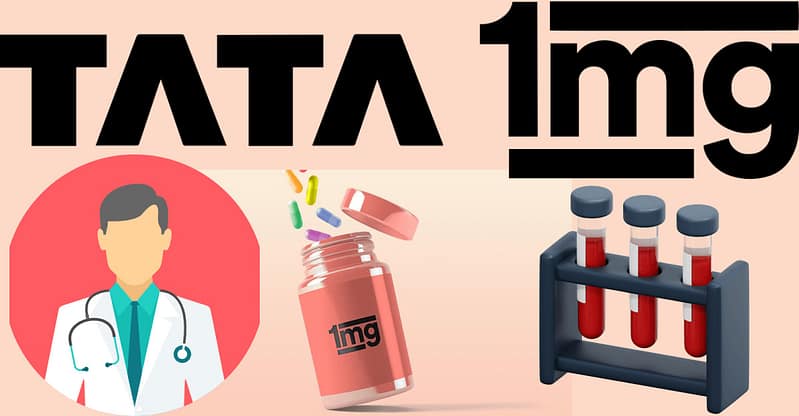Manmohan Singh, the former Prime Minister, was on Saturday cremated with full state honours at Nigambodh Ghat in presence of President Droupadi Murmu, Prime Minister Narendra Modi among other dignitories. The mortal remains of former prime minister Manmohan Singh was brought to Delhi’s Nighambodh Ghat crematorium for last rites on Saturday at around 11.30 pm. Singh’s final journey began from the AICC headquarters on Saturday morning after Congress leaders paid homage to their departed leader.
The flower-bedecked vehicle carrying the mortal remains of Singh left the Congress headquarters in a procession amid chants of “Manmohan Singh amar rahe”. A large number of Congress workers and leaders along with hundreds of Singh’s well-wishers walked along as “Jab tak suraj chand rahega, tab tak tera naam rahega” slogans rent the air.
Former Congress chief and Leader of Opposition in Lok Sabha, Rahul Gandhi, also accompanied the procession alongside Singh’s relatives. Singh’s mortal remains were taken to the AICC headquarters from his residence on 3, Motilal Nehru Road a little before 9 AM. Singh’s wife Gursharan Kaur and one of their daughters also laid a wreath on his body and paid their last respects.
Former Prime Minister Manmohan Singh, the architect of India’s economic reforms, died on Thursday (December 26). He was 92. Singh, prime minister for two terms in the Congress-led UPA government from 2004 to 2014, had been in poor health for the last few months. He is survived by his wife Gurcharan Singh and three daughters.
Manmohan Singh was the first Prime Minister since Jawaharlal Nehru to be re-elected after completing a full five-year term. Prime Minister Narendra Modi was the second. Singh was the first Sikh and non-Hindu to become India’s Prime Minister. He was the fourth longest-serving Prime Minister after Jawaharlal Nehru, Indira Gandhi and Narendra Modi.
Singh was the architect and brainchild of the economic reforms in 1991 that saved India from the brink of bankruptcy.
His visionary leadership introduced significant liberalisation measures, which included reducing trade barriers, encouraging foreign investments, and reforming the banking system.
Singh was named the Finance Minister of the Year by Euromoney and Asiamoney in 1993. Singh worked with the United Nations Conference on Trade and Development (UNCTAD) under renowned economist Raul Prebisch from 1966 to 1969. Despite the prestigious opportunity, Singh chose to leave the UN when he received an offer to work as a lecturer at the Delhi School of Economics.
Manmohan Singh had a habit of tuning into the BBC every morning. This routine played a crucial role during the 2004 tsunami crisis, as he was able to respond promptly and effectively, even before the Prime Minister’s Office (PMO) was alerted to the disaster.
The fallen find few friends in politics. Prime Minister Manmohan Singh realised this bitter truth when Rahul Gandhi vetoed his Government’s ordinance on convicted politicians. Always a gentleman and conscious of how much he is indebted to the benevolence of 10 Janpath for his job, Manmohan suffered the public humiliation in silence. No solace came from his colleagues. There was only the family own lean back on. On October 1, a day after returning from his trip to the US, daughters Daman Singh and Upinder Singh urged him over dinner at his 7 Race Course Road home to “give it all UPA” and go back to teaching, only to be stonewalled by a standard response: “I have a responsibility and can’t turn my back on it.”
The Prime Minister is, however, a disappointed man. And it was most apparent during the Cabinet meeting on October 3 when the bifurcation of Andhra Pradesh was being discussed. As two ministers from the state, M.M. Pallam Raju and K.S. Rao, rose angrily and protested against the creation of Telangana, all eyes were on the man presiding over the meeting. “Manmohan Singh sat zen-like throughout without uttering a word. When he was asked to take a call, he simply pointed to Union Home Minister Sushilkumar Shinde, and said that it is his ministry’s issue and he’ll defend it,” said a minister who attended the meeting. It took Shinde two hours to forge a consensus, but not before agreeing to set up a group of ministers to address the issues arising out of the proposed bifurcation.
The Prime Minister did not express any view. “No, he was not sulking because of the public snub by Rahul Gandhi, and the fact that he had been forced to withdraw the controversial ordinance on convicted politicians just a day earlier. This is how Manmohan Singh has become in the past few years-distant and aloof to the point of indifference,”says a confidant. He barely contributes to Cabinet meetings, and leaves it to the minister concerned to introduce, explain and then defend the Cabinet note.
Congress Vice-President Rahul Gandhi’s outburst on the ordinance, terming it “nonsense”, and the Prime Minister’s refusal to respond, has only underlined the perception that he is a pushover. His detached defence-“I don’t get upset easily. There is no question of resigning”-did not win him many admirers. With less than six months to go for the 2014 Lok Sabha elections, Congress would just wish Manmohan away if it could, but only after heaping the blame for everything that is wrong with UPA 2 on him.
With cbi waiting at his doorstep in connection with the Coalgate scam, the Prime Minister wants to utlilise his last few months in power to clear his name, fearing hounding by the agency once he walks away. His trusted aide and adviser TKA Nair has already been questioned by cbi once. “If he quits now, the Prime Minister will be in a bigger soup. He is stuck in the corner he has been pushed into. He can’t rely on the country’s Attorney General (G.E. Vahanvati), who owes his allegiance to people close to Congress President Sonia Gandhi,” says a source close to Manmohan.
The official PMO stand is that there is nothing to implicate the Prime Minister in Coalgate and that he sent off everything with the note “for appropriate action” to the coal secretary. But the fact remains that Manmohan is worried and has been forced to approach private lawyers for help. “The fear is, Manmohan Singh may suffer the fate of another non-family Congress prime minister, the late P.V. Narasimha Rao,” says one of the lawyers. Soon after demitting office, Rao faced charges in the Jharkhand Mukti Morcha bribery case and St Kitts case. Over the years, Congress has also tried to undermine Rao’s legacy in ushering economic reforms in the country with his then finance minister, Manmohan.
The Prime Minister sees himself as standing alone at the end of his political career. The ministers he could trust in the Cabinet are no longer there. The so-called Chandigarh Club has been demolished. Ashwani Kumar had to resign as law minister when he tried to manipulate cbi’s probe into Coalgate. Pawan Bansal had to quit as railways minister after his nephew was found meddling in ministry appointments for money. Manmohan can only claim Law Minister Kapil Sibal as a loyalist. However, sources say even Sibal is disillusioned with the way the Prime Minister is allowing Congress to run roughshod over him. Sibal was not in favour of bringing the ordinance to protect convicted politicians, especially since the bill was pending with the parliamentary standing committee. According to sources, he had explained it to Manmohan, who had tried to raise the issue of propriety in the Congress core committee meeting, headed by Sonia, which approved the ordinance. “Sibal agreed to it only after the Prime Minister requested him to do so. When he was asked to withdraw it on October 2, Sibal made his displeasure known, without mincing any words,” a source in the law ministry claims.
Although Manmohan Singh can speak Hindi, he cannot speak the language. During his tenure as Prime Minister, his speeches were written in Urdu. That was Dr Manmohan Singh, the self-effacing savant who rose to perform two big roles for an India in transition — that of Prime Minister and finance minister. In both roles, he is likely to win a contest with history for having been the cleanest of spirit and genuinely courteous, the most knowledgeable and, arguably, the most transformational.
Perhaps only India’s first Prime Minister could run him close. If Jawaharlal Nehru was the founder-statesman of independent India, the guardian spirit of our formative decades, it was Manmohan who fathered the India we see around us today. Its architect, its engineer, its reticent philosopher.
When another gnomic Prime Minister, Narasimha Rao, picked a safari suit-clad ex-RBI governor as his second choice FM in 1991, it was in a country not yet out of a long famine of new ideas and fresh energy, also one wracked by a decade of militancy, riots and assassinations.
Dr. Manmohan Singh, widely regarded as one of India’s most influential economists, left a lasting impact on both the country’s economic policies and global economic thought. As the chief architect of India’s economic liberalisation, he played a pivotal role in the 1991 economic reforms during a severe balance of payments crisis, when foreign exchange reserves were at an all-time low.
The former Prime Minister will always be remembered as the leader who championed the shift towards a market-driven economy. He introduced transformative policies, including trade liberalisation, reducing import tariffs, promoting foreign direct investment (FDI), and deregulating industries.
Dr. Singh, who served as Finance Minister under Prime Minister P.V. Narasimha Rao, also implemented tax reforms that broadened the tax base, simplified the tax structure, and improved revenue generation, all while reducing fiscal deficits.
As the Prime Minister, Dr. Singh continued with many of the reforms he had initiated as Finance Minister, including in areas like trade, foreign investment, and the services sector. Singh’s government focused on macroeconomic stability, including controlling inflation and maintaining fiscal discipline, though he faced challenges like rising fuel prices and food inflation during his tenure.
Dr Singh’s second term as Prime Minister also saw some policy challenges, including the global financial crisis of 2008 and domestic issues like the 2G spectrum scandal and the slowdown in reform momentum. However, he maintained India’s growth during a period of global economic uncertainty.
As Finance Minister, Dr. Singh believed in the power of the free market to drive economic growth. His policies led to India’s integration into the global economy, which facilitated higher growth rates.
During his tenure as Prime Minister (2004–2014), India saw robust economic growth, averaging around 7-8% annually. His policies helped transform India into one of the world’s fastest-growing economies.
Singh’s economic policies focused on promoting exports as a key driver for economic growth. He encouraged the development of India’s IT and services sectors, which became major contributors to the country’s GDP.
Manmohan Singh earned international acclaim for his economic acumen and his role in transforming India’s economy. He was widely regarded as a technocrat who brought expertise and pragmatism to the nation’s policymaking.
Before his political career, Singh served as the Chief Economist at the World Bank, where he gained a reputation for his deep understanding of global economic issues, especially in the context of developing nations.
Under his leadership, India became one of the largest economies in the world by GDP. His policies encouraged a shift from an agrarian economy to one driven by industry and services.
Dr. Singh’s economic policies laid the foundation for institutional mechanisms like inflation targeting and improved banking regulation, although these were further developed under later leadership.
By the second term of his Prime Ministership, some critics argued that Dr. Singh’s government became less proactive in implementing economic reforms, particularly in sectors like land acquisition, labor laws, and financial sector reforms.
Although the 2G spectrum scam and the coal scam during his tenure led to criticisms of his leadership, particularly concerning his inability to stem corruption within his administration, his personal integrity and commitment to India’s economic development were largely upheld.
Dr. Singh’s approach to economic management was rooted in his background as an economist. He advocated for evidence-based policy, often taking a cautious and deliberate stance.
While advocating for free-market policies, Singh also expressed concerns about the need for inclusive growth, with a particular emphasis on poverty reduction and improving the welfare of India’s disadvantaged communities.
Dr. Manmohan Singh’s legacy as an economist is defined by his instrumental role in transforming India’s economy from a closed, state-controlled system to one that is integrated into the global market. His leadership during the 1991 crisis and the subsequent reforms laid the foundation for India’s impressive economic growth in the decades that followed. Despite facing numerous challenges—both in domestic governance and global financial crises—his influence as a policymaker and economist remains profound in the history of India’s economic evolution.


















